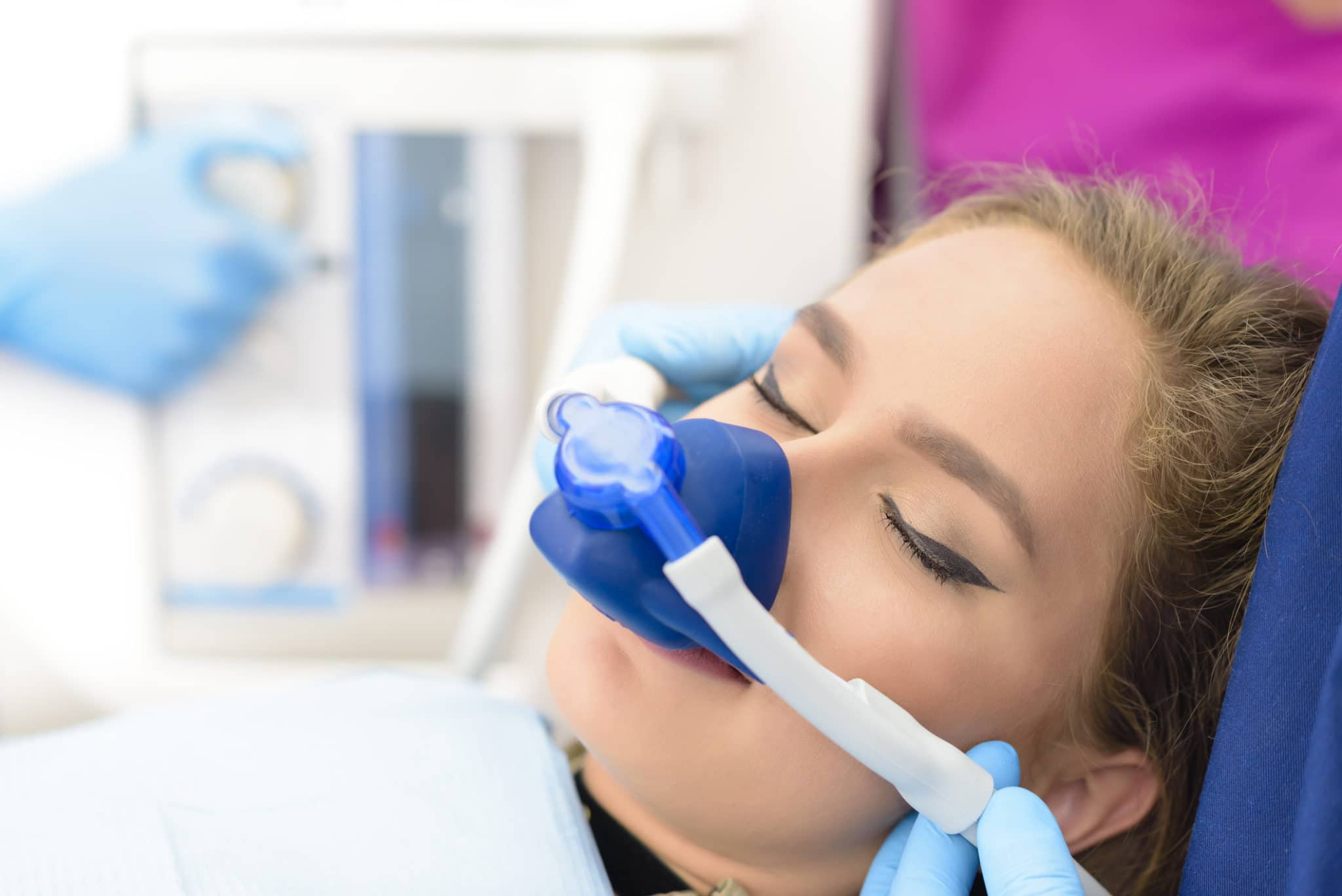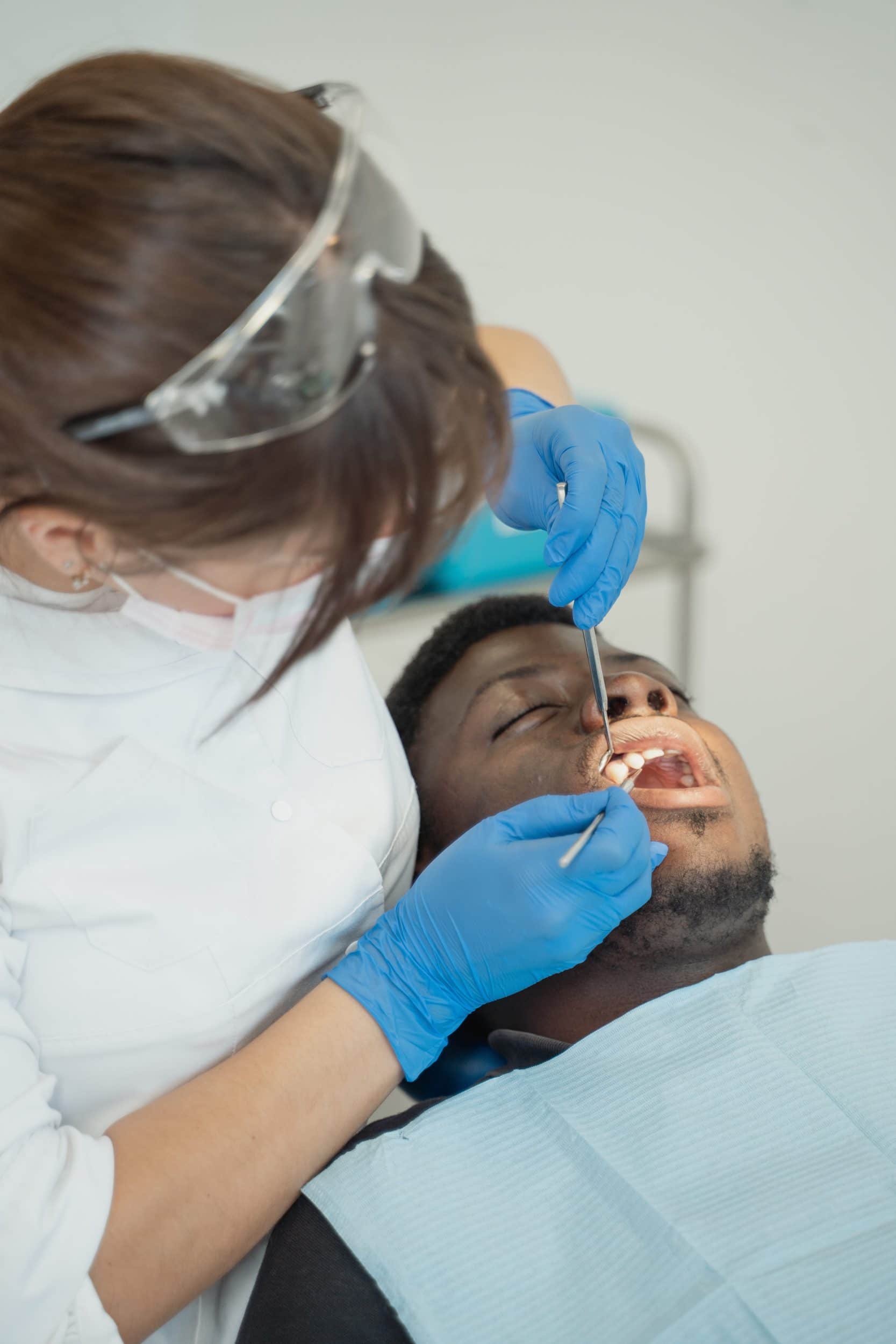Anxiety before dental appointments is a well-known phenomenon that happens to many people. But for some individuals, their anxiety and fear may prohibit them from getting the dental care they need. If your dental anxiety has become a significant obstacle in your life, give Dr. Steven E. Holbrook a call to learn whether you are a candidate for sedation dentistry! Dial 505-881-1159 today to reach our Albuquerque office and schedule your consultation.
What is Sedation Dentistry?
A lot of people may experience some form of anxiety when they are about to have dental work done. Some also getting anxious from visiting the dentist in general. This is known as dental phobia. This phobia may prevent people from seeking dental care resulting in poor dental health. One way we help our patients with dental phobia is by utilizing sedation dentistry.
Sedation dentistry uses medication to help patients receive a relaxing experience while undergoing treatment. There are multiple options in regards to sedation dentistry that are used based on the type of procedure and other factors.
Am I a Good Candidate for Sedation Dentistry?
If you are nervous about seeing the dentist, you are a good candidate for sedation dentistry. Our varying levels of sedation meet the ranging needs of our patients. The sedatives and methods used are customized to each situation. Some of the reasons people choose to include sedation in their dental visits include fear of the dentist, fear that dental treatment will hurt, an aversion to having someone “in their face,” fear of needles, past trauma, muscle or cognitive condition that makes it difficult to sit still, and a desire to have multiple procedures performed in one visit.
Patient Testimonial
“This doctor and his staff demonstrates utmost professionalism while making the patients feel at home and like part of the family.” – T.M.
Sedation Dentistry Benefits
Sedation Dentistry assists patients when undergoing complicated and long procedures. This can help patients feel as though their procedure only lasted a few minutes. Sedation dentistry can also help those who
- Have a low pain tolerance
- Cannot stay still
- Have sensitive teeth
- Have a bad gag reflex
- Need a lot of dental work

Dental Sedation Options
There are a variety of dental sedation options that can help patients achieve an optimal state of relaxation. Some of these options include:
Conscious Sedation
This is the most common type of sedation used in the dental office. This allows patients to remain awake and respond to Dr. Holbrook but still stay relaxed. Most patients will not remember the majority of the procedure.
Deep Sedation
Deep sedation may be needed for patients that have higher levels of anxiety. Deep sedation results in a state between conscious sedation and unconsciousness. This form of sedation is not offered in Dr. Holbrook’s office However, Dr. Holbrook can provide a referral if this form of sedation is needed.

Unconsciousness
Occasionally general anesthetic is necessary in oral surgery cases. General anesthesia does have its own risks associated with it. This form of sedation is not offered in Dr. Holbrook’s office. However, Dr. Holbrook can provide a referral if this form of sedation is needed.
How Is Dental Sedation Administered?
The three common ways to administer dental sedation include:
- Inhalation sedation, which is breathed through a small mask that fits over the nose. This is also known as nitrous oxide sedation.
- Oral conscious sedation is a pill or liquid that is taken by mouth sometime before the dental treatment is performed.

Will I Feel Any Pain With Dental Sedation?
No. Sedation is used in conjunction with the local anesthetic that is the norm for dental procedures. The effects of the sedative can enhance the pain-relieving effects of that anesthetic. Before administering the local injection, the dental technician or dentist may apply a numbing gel to desensitize the gums, as well. Our techniques are performed with care to maximum comfort for each of our patients.
Can I Drive Myself Home After Dental Sedation?
Depending on the type of sedation you receive, you may be able to drive yourself home after your appointment. Inhaled sedation, nitrous oxide, leaves the system within a few minutes, allowing patients to go about their day as usual. Oral conscious sedation takes longer to wear off. Patients are released to a loved one once they are alert after their procedure. The person should take the patient directly home and stay with them for at least a few hours, depending on the strength of the sedative received.
How Long Does Oral Sedation Take to Wear Off?
Oral conscious sedation can take several hours to fully wear off. Until the effects are completely gone, you should not drive or perform important activities. Rest is the best thing for coming out of sedation, even once you are feeling relatively alert. This is because your senses and reactivity may still be reduced from their norm.
Sedation Dentistry Risks
While most sedation dentistry risks are low, some minor side effects may occur such as:
- Nausea
- Dizziness
- Drowsiness (post-procedure)
It is important to discuss the risks of sedation with Dr. Holbrook before any dental procedure.

Is Sedation Dentistry Safe?
Sedation dentistry is a safe and effective way to manage dental anxiety and other conditions that may otherwise prevent a person from receiving necessary care. We are proud to offer this service in a comfortable, friendly environment.
What Should I Expect During My Sedation Dentistry Appointment?
Sedation is usually arranged before the appointment at which it will be used. Dr. Holbrook or a member of our staff discusses the types of sedation that are available and which are most appropriate based on the circumstances. Depending on the sedation method that is selected, you may take a pill before you arrive for your appointment. Some methods, like deeper sedation, may be administered once you arrive.
What you can expect during your sedation dentistry appointment is to feel comfortable throughout your procedure. You are in caring hands that are committed to the best possible dental experience.
What Are the Side Effects of Oral Sedation?
Oral sedation is safe and effective when given by an experienced dentist. However, some of the most common potential side effects are:
- Drowsiness.
- Feeling lightheaded.
- Possible nausea and vomiting.
- Dry mouth.
Be sure to verify your dentist’s credentials before agreeing to oral sedation. They should have completed specialized training and certification in administering oral sedation.
Is Oral Sedation the Same As General Anesthesia?
No, oral sedation is not the same as general anesthesia. When you are given general anesthesia, you are completely asleep. With oral sedation, you are still awake but are more relaxed and less scared and anxious. If you opt for oral sedation, you should still have someone else drive you home after your dental procedure. It is not uncommon to feel drowsy until it completely wears off.
Patient Testimonial
“I wanted to thank you for all you have done. You are extremely caring and calming, and you put my fears of going to the dentist at ease. I can’t thank you enough.” – Brenda
Important Considerations About Oral Sedation
Before having oral sedation, it is important to understand the risks and benefits. It is equally important to understand that not everyone can have oral sedation. Patients will respiratory issues may not be suitable candidates for oral sedation.
FAQ
What Kind of Work Can Be Done on Oral Sedation?
There are various common dental procedures that dentists use in conjunction with oral sedation.
These dental procedures include the following:
- Root canals
- Installing dental implants
- Tooth extraction
- Professional teeth whitening
- Veneers
- Teeth straightening
- Braces
It is important to keep in mind that oral sedation is not always required for these procedures. It depends on the severity and what the patient is comfortable with.
What Are The Misconceptions of Oral Sedation?
Oral sedation can help make procedures easier to perform and complete, but there are certain myths surrounding it that can turn patients off. The first and most notable misconception is that oral sedation is the same as general anesthesia. Though general anesthesia is an option, it is not the only form of sedation. Furthermore, general anesthesia is typically used for more intensive procedures. Other forms of oral sedation include IV sedation, oral conscious sedation, and nitrous oxide.
Another common myth of oral sedation is that sedation can only be used for adults. This is not true as children, teenagers, and adults can have oral sedation. However, there are some cases where patients of any age may not be able to receive oral sedation due to their medical history.
Who Benefits From Oral Sedation?
Almost anyone can benefit from having oral sedation. In some cases, it is best suited for people with a relatively strong gag reflex, patients with a physical disability, and children.
What Are The Risks of Oral Sedation?
Oral sedation does come with a few risks that you should be aware of.
The risks of oral sedation include the following:
- Feeling drowsy
- Dizziness
- Dry mouth
- Experiencing an allergic reaction
- Cardiovascular complications
- Breathing difficulties
Dr. Holbrook will discuss these risks in more detail during your consultation with him.
Consult Dr. Holbrook For Sedation Dentistry in Albuquerque!
To learn more about sedation dentistry or to determine whether you are a candidate, be sure to schedule a consultation at our Albuquerque, NM office. Call 505-881-1159 or click here to send us an Appointment Request Form! Dr. Steven Holbrook and his talented team look forward to serving you!






